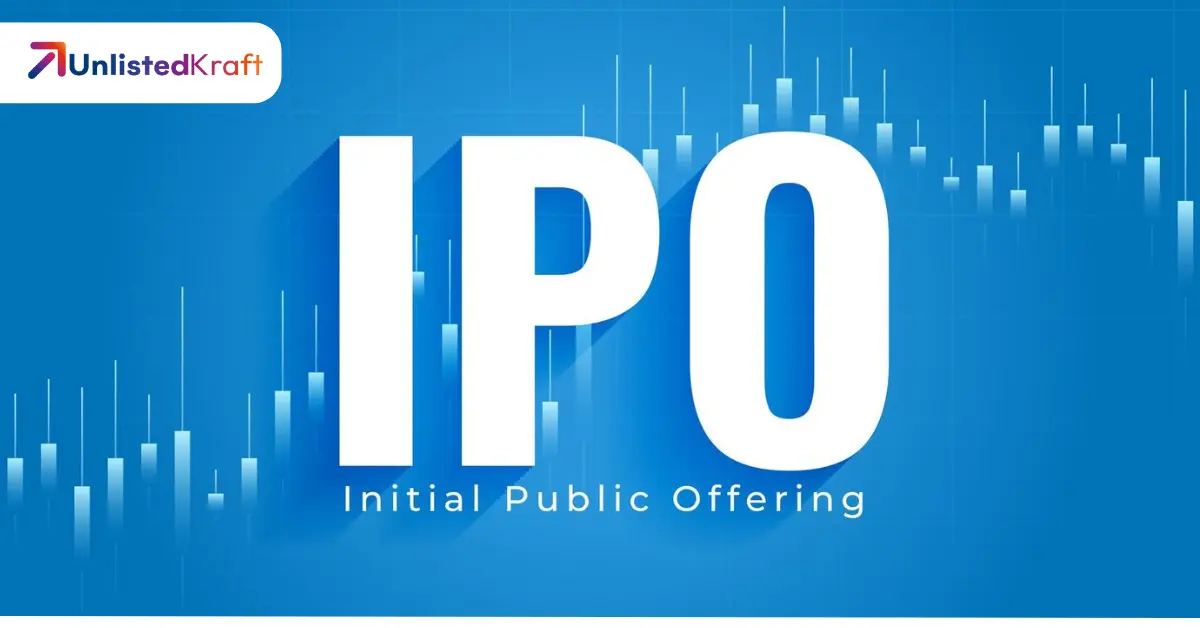What is an IPO? A Comprehensive Guide for Indian Investors in 2025

An Initial Public Offering (IPO) marks a significant milestone for a company, transitioning it from private to public ownership by offering shares to the public for the first time. For investors in India, IPOs represent an exciting opportunity to invest in promising companies early in their public journey, potentially reaping substantial returns. However, they also come with risks that require careful consideration. This guide explores what IPOs are, how they work in India, their benefits and risks, and alternative investment options for 2025.
What is an IPO?
An IPO is the process through which a private company becomes publicly traded by selling its shares to institutional and retail investors. This event, often referred to as "going public," allows companies to raise equity capital for various purposes, such as funding expansion, repaying debt, or launching new products. For investors, IPOs provide a chance to buy shares before they are freely traded on stock exchanges like the Bombay Stock Exchange (BSE) or National Stock Exchange (NSE).
In India, IPOs are regulated by the Securities and Exchange Board of India (SEBI), ensuring transparency and investor protection. The process involves detailed disclosures about the company’s financials, operations, and risks, which are outlined in a Draft Red Herring Prospectus (DRHP).
How Does the IPO Process Work in India?
The IPO process in India is structured and involves several steps, ensuring compliance with SEBI regulations. Here’s a detailed overview:
- Preparation: The company appoints investment banks as underwriters to manage the IPO. Together, they prepare the DRHP, a comprehensive document detailing the company’s financials, business model, and the purpose of the IPO.
- SEBI Approval: The DRHP is submitted to SEBI for review. SEBI scrutinizes the document to ensure compliance and transparency. Once approved, the company can announce the IPO.
- Marketing: The company and underwriters conduct roadshows to pitch the IPO to institutional investors, high-net-worth individuals (HNIs), and retail investors, generating interest and assessing demand.
- Pricing: IPOs in India can be offered through two methods:
- Fixed Price Offering: The share price is set in advance, and investors pay the full amount upfront.
- Book Building Offering: A price band is provided (e.g., ₹135–₹142), and investors bid within this range. The final price is determined based on demand.
- Subscription: Investors apply for shares during the subscription period, typically lasting a few days. Applications are made through brokers or banks.
- Allotment: Shares are allocated based on demand and availability. Oversubscribed IPOs may result in partial allotments, especially for retail investors.
- Listing: The shares are listed on stock exchanges, and trading begins. The listing price may differ from the offer price, depending on market sentiment.
Why Do Companies Launch IPOs?
Companies pursue IPOs for several strategic reasons:
- Raise Capital: Funds are used for expansion, infrastructure, acquisitions, or debt repayment.
- Enhance Credibility: Going public increases brand visibility and trust among customers and partners.
- Liquidity for Investors: Early investors, founders, and employees can sell their shares, realizing gains.
- Future Fundraising: Public companies can issue additional shares later for further capital needs.
Benefits of Investing in IPOs
Investing in IPOs can be appealing for Indian investors, particularly in a dynamic market like 2025. Key benefits include:
- Potential for High Returns: If the company performs well post-listing, early investors may see significant gains. For example, well-subscribed IPOs often list at a premium.
- Early Investment Opportunity: IPOs allow investors to buy into promising companies before their shares are widely traded.
- Liquidity: Once listed, shares can be easily bought or sold on stock exchanges, providing flexibility.
Risks Associated with IPOs
While IPOs can be lucrative, they carry inherent risks that investors should evaluate:
- Market Volatility: IPO shares can experience significant price swings in the initial trading days, influenced by market sentiment.
- Limited Historical Data: New public companies may lack a long track record, making it harder to predict future performance.
- Overvaluation: Some IPOs are priced higher than their intrinsic value, leading to potential losses if the market corrects the price post-listing.
- Subscription Risks: Oversubscribed IPOs may result in fewer shares allocated, limiting potential gains.
How to Invest in IPOs in India
Investing in an IPO in India is straightforward, provided you meet the requirements and follow the process:
Requirements
- PAN Card: Mandatory for all financial transactions in India.
- Demat Account: To hold the shares electronically. You can open one through brokers like Zerodha or Angel One.
- Trading Account: Optional, needed only for selling shares post-listing.
Application Process
- Choose a Platform: Apply through your broker’s online portal (e.g., Groww, Zerodha) or your bank’s net-banking facility using the ASBA (Application Supported by Blocked Amount) process.
- Enter Details: Specify the number of shares (lot size) and price (for book-building IPOs).
- Authorize Payment: Use UPI to block the application amount in your bank account. The amount is debited only if shares are allotted.
- Check Allotment: After the subscription period, check the allotment status on the registrar’s website or exchange platforms like BSE.
The IPO Landscape in India in 2025
India’s IPO market has been robust in recent years, and 2025 is expected to continue this trend. According to reports, India was the busiest IPO market globally by deal count in 2024, driven by domestic investor enthusiasm (White & Case). This momentum is likely to persist, with a diverse range of companies planning IPOs in 2025.
Top Upcoming IPOs in India 2025
- PhonePe – Fintech leader; expected to be one of the largest IPOs in India.
- JSW Cement – Infrastructure-driven demand expected.
- Tata Capital: A major financial services provider.
- Zepto: A quick-commerce startup.
These IPOs span technology, finance, consumer goods, and infrastructure, reflecting a balanced and healthy market. The pipeline also includes smaller SME IPOs like Virtual Galaxy Infotech and Accretion Pharmaceuticals, catering to niche sectors (Moneycontrol).
Alternative Investment Options in India for 2025
While IPOs are a compelling investment avenue, diversifying your portfolio with alternative investments can enhance returns and manage risk. In 2025, several alternative options are gaining traction in India:
- Fractional Real Estate: Investors can own a portion of high-value properties, with platforms like Assetmonk enabling access. The market is projected to grow to $8.9 billion by 2025.
- Peer-to-Peer (P2P) Lending: Platforms allow investors to lend money to individuals or businesses, offering returns of 9–14% but with credit risk.
- Alternative Investment Funds (AIFs): These pooled funds invest in private equity, venture capital, or hedge funds, catering to high-net-worth individuals seeking diversification.
- Secured Bonds and Invoice Discounting: These provide fixed-income opportunities with collateral backing, reducing risk compared to unsecured options.
- Commodities: Investing in gold, silver, or agricultural products can hedge against inflation.
Quick Comparison of these Investment Options:
These alternatives offer higher returns than traditional stocks or bonds but often have lower liquidity and higher risk. Investors should assess their risk tolerance and consult financial advisors before diving in.
Frequently Asked Questions (FAQs)
What is the minimum investment for an IPO in India?
It depends on the IPO’s lot size and share price, typically ranging from ₹5,000 to ₹50,000.
Can NRIs invest in IPOs in India?
Yes, through NRI demat accounts, subject to RBI regulations.
How is the IPO price determined?
Via fixed price or book-building, where investor demand sets the final price.
What happens if I don’t get IPO shares?
The blocked amount is released back to your bank account.
Are IPOs risky investments?
Yes, due to volatility and limited historical data. Research is essential.
Conclusion
IPOs in India offer a unique opportunity to invest in companies at the cusp of public trading, with the potential for significant returns. The 2025 IPO market is expected to be vibrant, with diverse companies listing on BSE and NSE. However, investors must weigh the benefits against risks like volatility and overvaluation. By researching the company’s prospectus and market conditions, you can make informed decisions. Additionally, exploring alternative investments like fractional real estate or P2P lending can diversify your portfolio, especially in a dynamic market like India’s in 2025. Always consult a financial advisor to align your investments with your goals and risk appetite.
Related Post
Reach out to our Experts if you have any Doubts
Like the best things in life, Consultations @Unlistedkraft are free
Drop a Mail or give us a Missed Call & Begin your Investment Journey here



